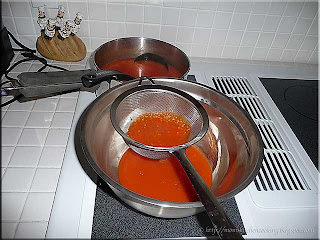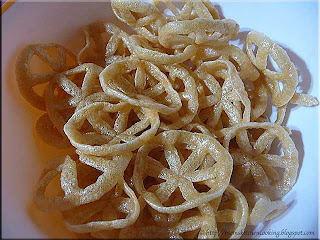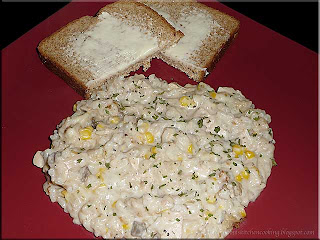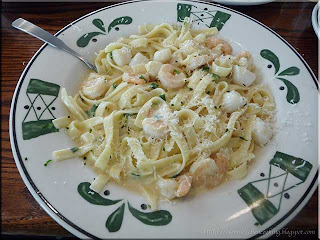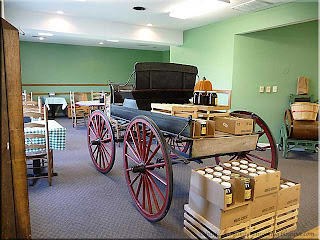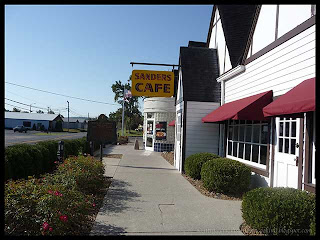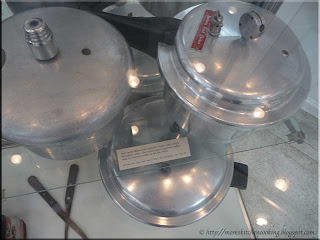This is the last post on our recent foodie finds while on vacation although I will be sharing so of the great things I make with the foods we brought home from the trip. Going to our vacation home ends up being a mixture of eating out and cooking in. This offers us the wonderful opportunity to explore some great regional foods, diners, restaurants, farmer's markets and grocery stores as well as get culinary inspiration.
Our final foodie stop on the way home was
Olive Garden located at 1936 Roschman Ave in Lima, Ohio. Olive Garden is a chain restaurant specializing in Italian style cuisine. A chain restaurant when on the road traveling from point A to point B without sightseeing can be rather desirable as you already know the quality of food. For that reason we often stop at truck stops when traveling. This trip we decided to stop for a nice relaxing meal at Olive Garden. It proved to be a lovely way to end the trip. We still had several miles to travel but will filled tummies after a bit of down time from being on the road it made the last leg of the journey a lot more pleasant.
I really enjoy restaurants! I love taking in the sights, the sounds, the aromas and the food presentation. It is a great way to do a bit of pampering while peaking your interst in food. Of course good company doesn't hurt! We ordered the
smoked mozzrella fonduta as an appetizer. This appetizer consisted of oven-baked smoked mozzrella, provolone, parmesan and romano cheese garnished with parsley and chopped tomato served with Tuscan bread. The baked cheeses where rich and creamy with a delightful flavour and just gooey enough for topping the bread medellions. This wonderful mouth sensation would be extremely easy to duplicate at home so I will definitely be trying it.
October is
National Pasta Month so where better to indulge in pasta than an Italian style eatery? Olive Garden offers several pasta dishes so were plenty to choose from. My husband ordered the
seafood alfredo. This is dish came with fettuccine noodles topped with alfredo sauce, shrimp and scallops garnished with parsley and fresh grated parmesan cheese. Warm, soft breadsticks and a salad were included. The alfedo sauce makes the dish rich and creamy,
Seafood fettuccini is a very easy dish to duplicate at home and one we have made many a time. My version is a bit saucier but very close to the Olive Garden's seafood alfredo.
Salad was included with both meals. Instead of bringing out two side salads the waiter brought out a large, bottomless salad for us to share. This is a nice presentation as each one at the table can help themselves to as much salad as they desire. The bowl can be refilled if desired. It is also a practical, time saving presentation for the restaurant staff.
I ordered the
spaghetti with meat sauce. Now I have to confess this is the ultimate meal choice for me when eating out. Yes I make
spaghetti with meat sauce at home from scratch and I even can up some of my sauce for convenience but this has always been my favourite meal to order out. You can tell a lot about a restaurant on the basis of their spaghetti with meat sauce! To me a big plate of spaghetti covered with meat sauce is comfort eating at it's best!
















